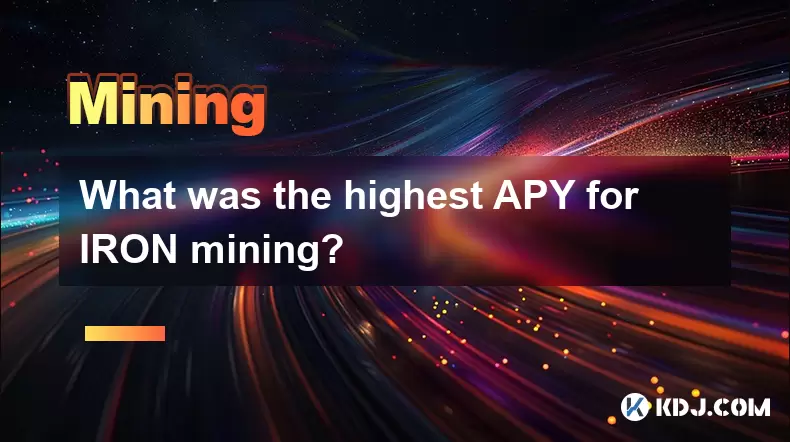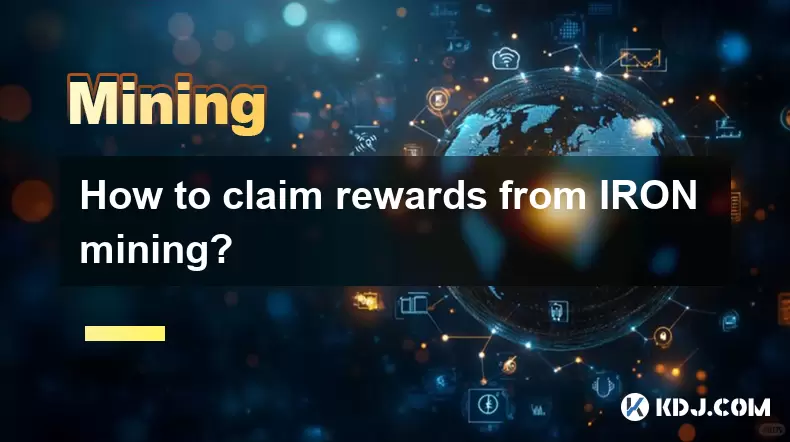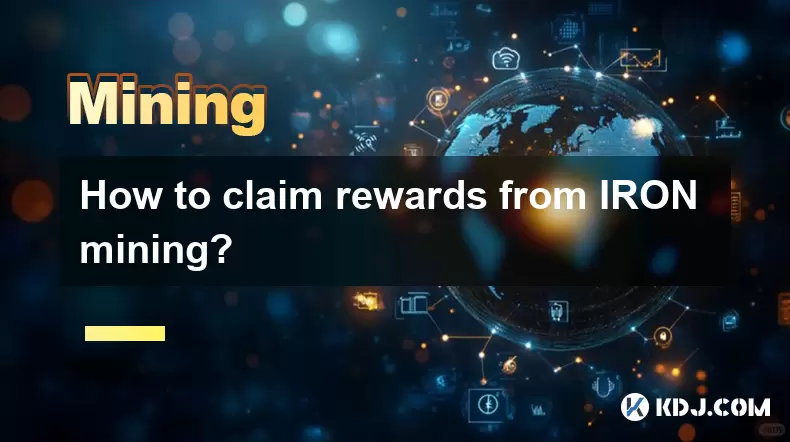-
 Bitcoin
Bitcoin $114400
0.68% -
 Ethereum
Ethereum $3550
2.48% -
 XRP
XRP $3.001
4.99% -
 Tether USDt
Tether USDt $0.9999
0.01% -
 BNB
BNB $757.6
1.46% -
 Solana
Solana $162.9
1.07% -
 USDC
USDC $0.9998
0.00% -
 TRON
TRON $0.3294
0.91% -
 Dogecoin
Dogecoin $0.2015
2.46% -
 Cardano
Cardano $0.7379
2.01% -
 Stellar
Stellar $0.4141
8.83% -
 Hyperliquid
Hyperliquid $37.83
-1.91% -
 Sui
Sui $3.454
0.76% -
 Chainlink
Chainlink $16.62
3.53% -
 Bitcoin Cash
Bitcoin Cash $554.6
2.84% -
 Hedera
Hedera $0.2486
3.91% -
 Ethena USDe
Ethena USDe $1.001
0.00% -
 Avalanche
Avalanche $21.95
3.34% -
 Toncoin
Toncoin $3.563
-2.85% -
 Litecoin
Litecoin $112.7
2.65% -
 UNUS SED LEO
UNUS SED LEO $8.977
0.13% -
 Shiba Inu
Shiba Inu $0.00001232
1.85% -
 Uniswap
Uniswap $9.319
2.93% -
 Polkadot
Polkadot $3.632
1.38% -
 Monero
Monero $307.2
2.36% -
 Dai
Dai $0.9997
-0.03% -
 Bitget Token
Bitget Token $4.340
0.91% -
 Pepe
Pepe $0.00001048
1.07% -
 Cronos
Cronos $0.1348
3.26% -
 Aave
Aave $261.5
1.93%
Are the income from pledge mining affected by the inflation rate of pledge coins?
Inflation rate of pledge coins impacts mining income; higher rates can increase rewards but may dilute value, affecting real income based on market dynamics.
Apr 16, 2025 at 12:57 pm

The relationship between income from pledge mining and the inflation rate of pledge coins is a critical topic within the cryptocurrency circle. Pledge mining, often referred to as staking, involves participants locking up a certain amount of cryptocurrency to support the operations and security of a blockchain network. In return, they receive rewards, typically in the form of additional cryptocurrency. The inflation rate of the pledge coins, which is the rate at which the total supply of the cryptocurrency increases over time, can indeed impact the income from pledge mining. This article will delve into how these two factors interact and what implications this has for participants in the cryptocurrency ecosystem.
Understanding Pledge Mining and Inflation
Pledge mining is a mechanism used by many blockchain networks, particularly those employing proof-of-stake (PoS) or similar consensus algorithms. Participants, or stakers, lock up their coins as a pledge to the network, which helps in validating transactions and maintaining the network's integrity. In return, they are rewarded with additional coins, which forms their income from pledge mining.
Inflation rate in the context of cryptocurrencies refers to the rate at which new coins are created and added to the total supply. This can be influenced by various factors, including the protocol's design, the rate of block creation, and the reward structure for miners or stakers.
How Inflation Affects Pledge Mining Income
The inflation rate of pledge coins directly impacts the income from pledge mining in several ways. Firstly, higher inflation rates mean more new coins are being created and distributed as rewards. This can lead to an increase in the total amount of rewards available to stakers, potentially increasing their income. However, this is not always a straightforward benefit.
Higher inflation rates can also dilute the value of the rewards. If the supply of the cryptocurrency increases rapidly, the value of each coin may decrease, which could offset the increased number of coins received as rewards. This means that while stakers might receive more coins, the real value of their income might not increase proportionally.
The Role of Market Dynamics
Market dynamics play a crucial role in how inflation affects pledge mining income. The demand for the cryptocurrency can influence its value, which in turn affects the real income from pledge mining. If the demand for the cryptocurrency remains strong despite an increase in supply, the value of the rewards might not decrease significantly, and stakers could still see a net increase in their income.
Conversely, if the market perceives the increased inflation as a negative factor, it could lead to a decrease in demand and a subsequent drop in the cryptocurrency's value. This would negatively impact the real income from pledge mining, as the value of the rewards would be lower.
Case Studies: Different Cryptocurrencies
To better understand the impact of inflation on pledge mining income, let's look at a few examples of different cryptocurrencies.
Ethereum (ETH): Ethereum transitioned to a proof-of-stake model with Ethereum 2.0, where stakers can earn rewards by pledging their ETH. The inflation rate of ETH is designed to be relatively low, which helps maintain the value of the rewards. However, the exact impact on stakers' income depends on market conditions and the overall demand for ETH.
Cardano (ADA): Cardano uses a proof-of-stake protocol called Ouroboros, where stakers can earn ADA by pledging their coins. The inflation rate of ADA is set to be around 5-6% annually, which is considered moderate. This rate aims to balance the need for rewarding stakers with maintaining the value of the cryptocurrency.
Tezos (XTZ): Tezos operates on a proof-of-stake model where stakers can earn XTZ by pledging their coins. The inflation rate of XTZ is designed to be around 5.5% annually. This rate is intended to provide a steady income for stakers while keeping the overall supply growth in check.
Strategies for Maximizing Pledge Mining Income
Given the impact of inflation on pledge mining income, stakers can employ several strategies to maximize their returns.
Diversify Pledge Assets: Stakers can diversify their pledge assets across different cryptocurrencies to mitigate the risk of inflation in any single cryptocurrency affecting their overall income.
Monitor Market Conditions: Keeping a close eye on market conditions and adjusting pledge strategies accordingly can help stakers take advantage of favorable conditions and minimize the impact of negative ones.
Participate in Governance: Some blockchain networks allow stakers to participate in governance decisions, which can include decisions about inflation rates and reward structures. By actively participating, stakers can influence these factors to their benefit.
Reinvest Rewards: Reinvesting the rewards received from pledge mining can compound the income over time, potentially offsetting the effects of inflation.
Technical Aspects of Pledge Mining
To engage in pledge mining, participants need to follow specific steps, which can vary depending on the cryptocurrency and the platform used. Here is a general guide on how to start pledge mining:
Choose a Cryptocurrency: Select a cryptocurrency that supports pledge mining and aligns with your investment goals.
Set Up a Wallet: Use a compatible wallet that supports pledge mining for the chosen cryptocurrency. This could be a software wallet, a hardware wallet, or a web-based wallet provided by the cryptocurrency's official platform.
Acquire the Cryptocurrency: Purchase or transfer the required amount of cryptocurrency to your wallet.
Pledge the Coins: Follow the specific instructions provided by the cryptocurrency's platform to pledge your coins. This usually involves selecting the amount to pledge and confirming the transaction.
Monitor and Manage: Regularly monitor your pledge and the rewards you are earning. Some platforms allow you to adjust your pledge or withdraw your rewards at any time.
Frequently Asked Questions
Q: Can the inflation rate of pledge coins be adjusted by the network's governance?
A: Yes, in some blockchain networks, the inflation rate can be adjusted through governance mechanisms. Participants in these networks can vote on proposals to change the inflation rate, which can directly impact the income from pledge mining.
Q: How does the lock-up period of pledged coins affect the income from pledge mining?
A: The lock-up period, or the duration for which coins must be pledged, can influence the income from pledge mining. Longer lock-up periods might offer higher rewards to incentivize long-term commitment, but they also mean that stakers cannot access their pledged coins until the period ends.
Q: Are there any risks associated with pledge mining due to inflation?
A: Yes, one of the primary risks is the potential for the value of the rewards to decrease due to inflation. If the inflation rate is too high, it could lead to a significant devaluation of the cryptocurrency, reducing the real income from pledge mining.
Q: How can stakers protect themselves from the negative effects of inflation on their pledge mining income?
A: Stakers can protect themselves by diversifying their pledge assets, staying informed about market conditions, participating in governance to influence inflation rates, and reinvesting their rewards to compound their income over time.
Disclaimer:info@kdj.com
The information provided is not trading advice. kdj.com does not assume any responsibility for any investments made based on the information provided in this article. Cryptocurrencies are highly volatile and it is highly recommended that you invest with caution after thorough research!
If you believe that the content used on this website infringes your copyright, please contact us immediately (info@kdj.com) and we will delete it promptly.
- Cryptocurrency, Altcoins, and Profit Potential: Navigating the Wild West
- 2025-08-04 14:50:11
- Blue Gold & Crypto: Investing Disruption in Precious Metals
- 2025-08-04 14:30:11
- Japan, Metaplanet, and Bitcoin Acquisition: A New Era of Corporate Treasury?
- 2025-08-04 14:30:11
- Coinbase's Buy Rating & Bitcoin's Bold Future: A Canaccord Genuity Perspective
- 2025-08-04 14:50:11
- Coinbase's Buy Rating Maintained by Rosenblatt Securities: A Deep Dive
- 2025-08-04 14:55:11
- Cryptos, Strategic Choices, High Returns: Navigating the Meme Coin Mania
- 2025-08-04 14:55:11
Related knowledge

What was the highest APY for IRON mining?
Jul 23,2025 at 05:14am
Understanding IRON Token and Its Mining MechanismThe IRON token is a stablecoin that operates within the Iron Finance ecosystem, primarily on blockcha...

What is impermanent loss in IRON pools?
Jul 23,2025 at 09:00am
Understanding Impermanent Loss in the Context of IRON PoolsImpermanent loss is a phenomenon that affects liquidity providers in decentralized finance ...

How to claim rewards from IRON mining?
Jul 23,2025 at 02:21pm
Understanding IRON Mining and Reward MechanismsIRON Finance operated as a decentralized finance (DeFi) protocol on the Polygon and Binance Smart Chain...

How to claim rewards from IRON mining?
Jul 29,2025 at 05:07am
Understanding IRON Mining and Reward MechanismIRON is a dual-token system designed to stabilize the value of a synthetic asset through a combination o...

IRON mining tutorial for beginners
Jul 27,2025 at 12:01am
What Is IRON and How Does It Work in the Cryptocurrency Ecosystem?IRON is a cryptocurrency token that operates on the Binance Smart Chain (BSC) and is...

How to calculate APY for IRON mining?
Jul 28,2025 at 09:49am
Understanding APY in the Context of IRON Token MiningWhen engaging in IRON token mining within decentralized finance (DeFi) platforms, Annual Percenta...

What was the highest APY for IRON mining?
Jul 23,2025 at 05:14am
Understanding IRON Token and Its Mining MechanismThe IRON token is a stablecoin that operates within the Iron Finance ecosystem, primarily on blockcha...

What is impermanent loss in IRON pools?
Jul 23,2025 at 09:00am
Understanding Impermanent Loss in the Context of IRON PoolsImpermanent loss is a phenomenon that affects liquidity providers in decentralized finance ...

How to claim rewards from IRON mining?
Jul 23,2025 at 02:21pm
Understanding IRON Mining and Reward MechanismsIRON Finance operated as a decentralized finance (DeFi) protocol on the Polygon and Binance Smart Chain...

How to claim rewards from IRON mining?
Jul 29,2025 at 05:07am
Understanding IRON Mining and Reward MechanismIRON is a dual-token system designed to stabilize the value of a synthetic asset through a combination o...

IRON mining tutorial for beginners
Jul 27,2025 at 12:01am
What Is IRON and How Does It Work in the Cryptocurrency Ecosystem?IRON is a cryptocurrency token that operates on the Binance Smart Chain (BSC) and is...

How to calculate APY for IRON mining?
Jul 28,2025 at 09:49am
Understanding APY in the Context of IRON Token MiningWhen engaging in IRON token mining within decentralized finance (DeFi) platforms, Annual Percenta...
See all articles

























































































